The Autumn Flowering Common Witch Hazel Tree
Witch Hazel Hamamelis Virginiana
Play host to 68 species of butterflies and moths with this witch hazel native tree.
The common witch hazel tree Hamamelis virginiana is a distinctive and versatile plant native to eastern North America.
With its simple green leaves, witch hazel may look plain in spring and summer, and often gets overlooked at the garden center. But, come fall, it steals the show!
In autumn, this witch hazel native bursts into color with bright, clear yellow leaves and unique ribbon-like yellow flowers.
The flowers are an important late-season nectar source for bees and other pollinators, offering food at a time of year when little else is available.
Blooms persist into November or December, and capsule-shaped fruits emerge green and become brown and woody with age, providing food to birds and squirrels.
This witch hazel native is more than just a late-season beauty—it’s a vital host plant for 68 species of butterflies and moths. By supporting caterpillars, it helps to sustain local ecosystems and provide food for birds and other wildlife.
Known for its remarkable adaptability, this plant thrives in a wide range of environments in zones 3-9, from moist woodlands to rugged slopes, making it a low-maintenance and resilient choice for the garden.
Despite its striking autumn flowers, adaptability to various soil types, and easy-to-grow nature, common witch hazel often remains overlooked in garden design and deserves to be more widely planted!
Image credit @AH86 via Canva.com
Is Witch Hazel Deer Resistant?
The North American witch hazel Hamamelis virginiana is moderately deer resistant. Deer may nibble on this witch hazel tree, especially tender young leaves, but generally prefer other plants.
Rutgers University rates witch hazel Virginiana as “seldom severely damaged” on their list of Landscape Plants Rated by Deer Resistance.
While heavy browsing is uncommon, young plants may need protection in areas with high deer populations. Surround young trees with wire cages, fencing, or deer guards to prevent damage.
How To Grow Witch Hazel Hamamelis virginiana:
Size & Shape – This common witch hazel native tree grows 15–20 feet tall and wide, starting out with an upright, rounded form that becomes more open with age. Keep this mature size in mind when picking a spot to plant your tree.
Soil & Sun – Witch hazel prefers moist, acidic, well-draining soil; plant in full sun to partial shade and avoid overly dry conditions. Witch hazel is tolerant of clay soil.
Low Maintenance – Witch hazel is generally pest free and disease resistant. It may attract aphids when planted close to birch trees.
Pruning - Pruning is not necessary but can help to maintain the plant’s fullness and encourage flowering. Prune in late winter or early spring as needed, when flowering has finished.
Watering – Frequent watering is crucial to help newly planted trees establish a strong root system - learn more in How to Water a Tree. After your tree is established, be sure to stay on top of watering as needed, especially during the heat of summer and times of drought. Are you in a drought? Check the U.S. Drought Monitor.
Image credit @James53145 via Canva.com
Where to Plant Witch Hazel Hamamelis virginiana:
Fall & Winter Interest – Pair this witch hazel native with other fall and winter stars like Virginia sweetspire, red maple trees, serviceberry trees, winterberry hollies, hybrid witch hazels, and American hollies, where its bright yellow fall foliage and late-season blooms will stand out in the landscape.
Woodland Garden – Pair with native understory trees and shade-loving perennials for a natural, layered look.
Mixed Borders – Combine with evergreens and shrubs like red-twig dogwood for year-round color and texture.
Pollinator Haven – Place near butterfly gardens to support native moths, butterflies, and other beneficial insects.
Screen or Hedge – Use in group plantings for a loose, informal privacy screen with seasonal beauty.
Near Walkways & Patios – Position where its fragrant late-season blooms can be easily enjoyed up close.
Fire Pit Planting - Plant near a fire pit, where flowers and fragrance can be enjoyed during the fall bonfire season.
Witch Hazel Types
There are five species in the witch hazel genus (Hamamelis):
Common witchhazel (Hamamelis virginiana) is native to eastern North America and has yellow flowers blooming in late fall.
Chinese witchhazel (Hamamelis mollis), native to Western China, is the most fragrant and least cold hardy witch hazel, with golden yellow flowers in winter.
Japanese witchhazel (Hamamelis japonica) has pale yellow winter flowers and is native to Japan.
Ozark witchhazel (Hamamelis vernalis), native to the Ozark region of the central United States, is a large suckering shrub with yellow-red flowers in late winter.
Big Leaf witchhazel (Hamamelis ovalis) is a relatively new witch hazel species, discovered in southern Mississippi, with red to orange-yellow flowers.
Witch Hazel vs Forsythia
While the native witch hazel tree and forsythia both brighten gardens with yellow blooms, they differ in key ways:
Witch hazel Hamamelis virginiana has a more open, spreading, tree-like form, while forsythia grows as a dense, arching shrub.
Witch hazel’s spidery, pale yellow flowers bloom in late fall to early winter, providing rare cold-season interest, whereas forsythia bursts into vibrant golden-yellow flowers in early spring before its leaves emerge.
In the landscape, the witch hazel tree is ideal for naturalized plantings, woodland edges, or as a focal point in fall and winter gardens. Forsythia, with its early-season cheer, is commonly used for hedges, mass plantings, or brightening up spring borders.
The witch hazel Hamamelis Virginian is native to North America and supports local ecosystems by hosting butterflies, moths, and other wildlife. Forsythia is native to Asia and Eastern Europe and is an introduced species that offers little wildlife value when planted in North American gardens.
Image credit @Claude Laprise via Canva.com
Find a Tree for Your Landscape:





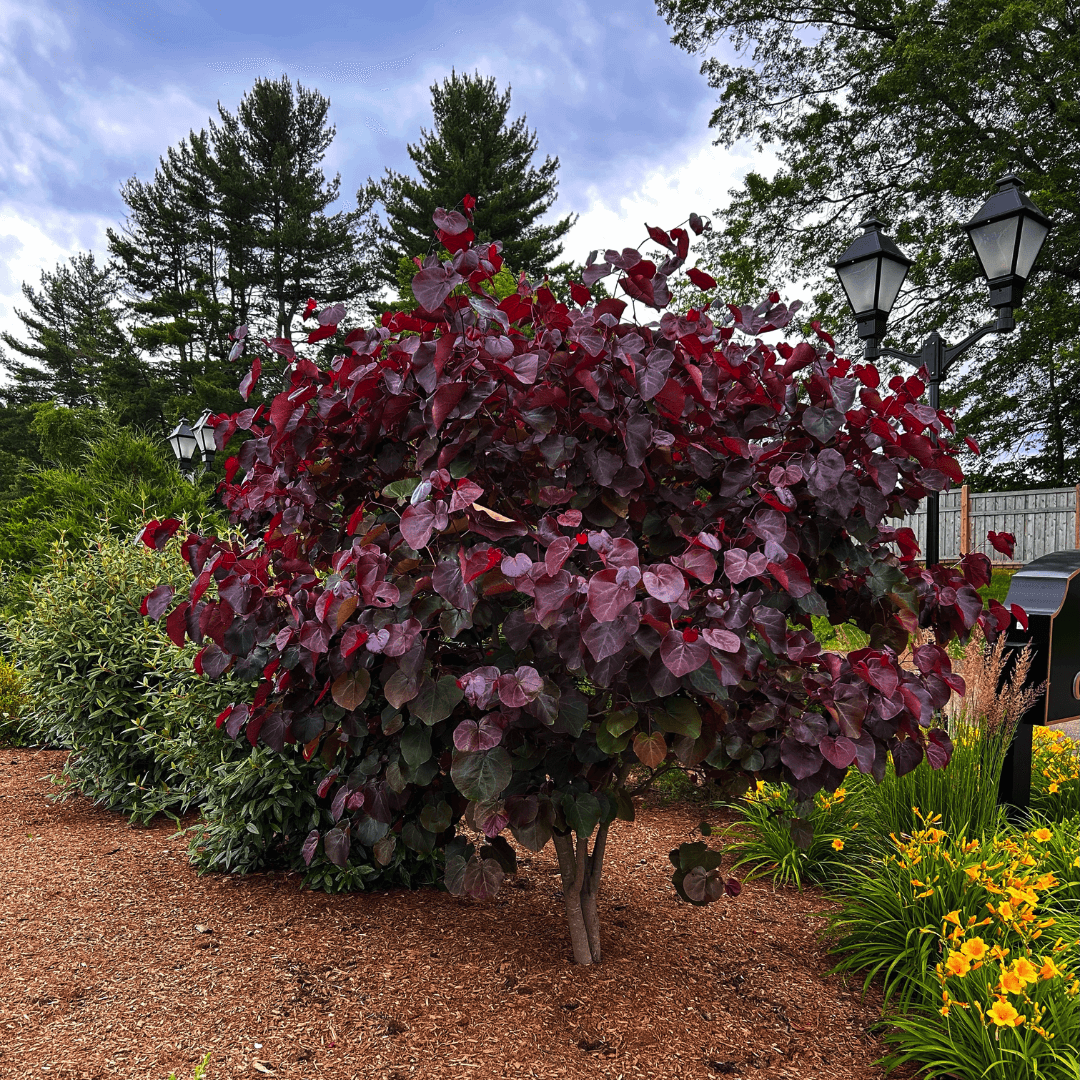
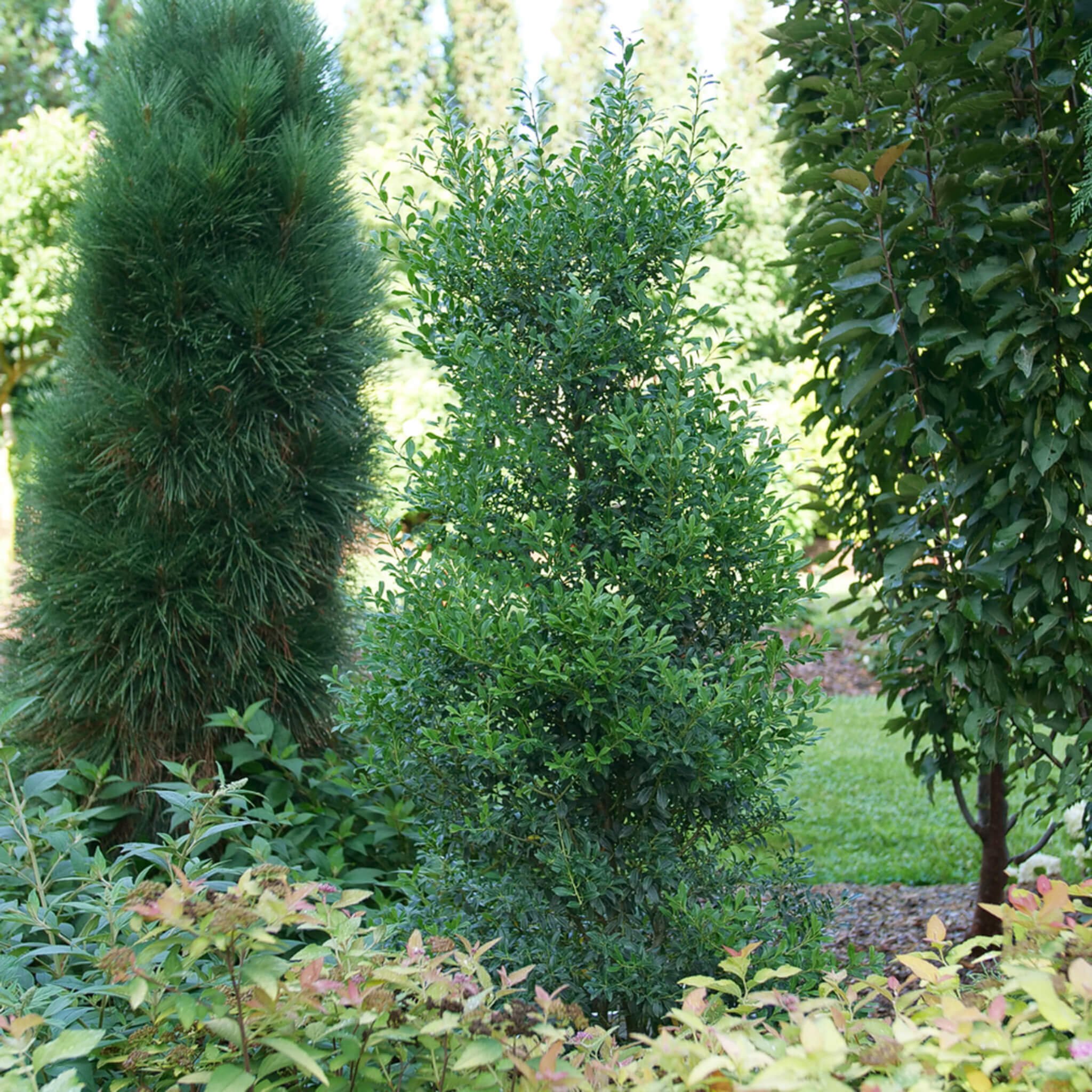
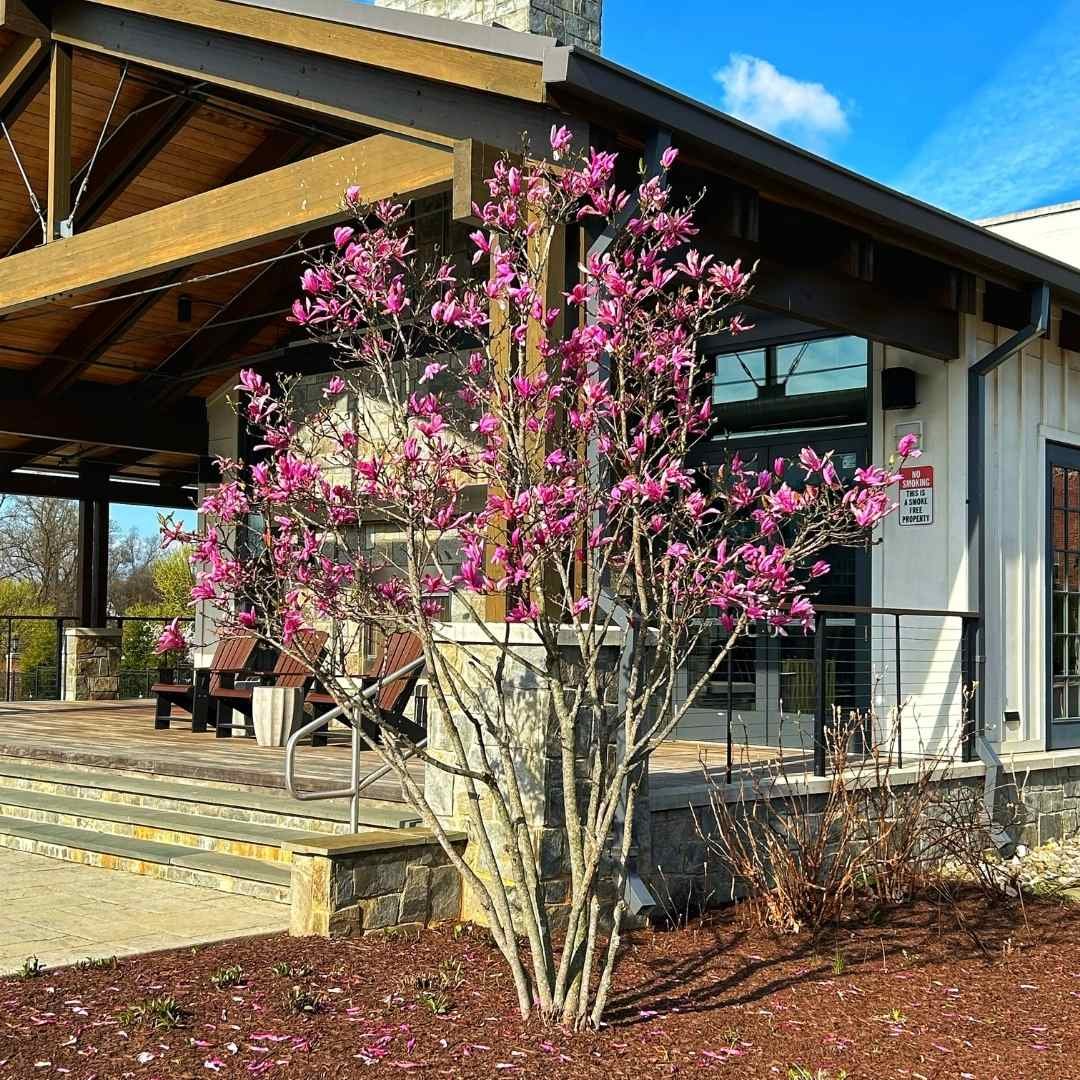



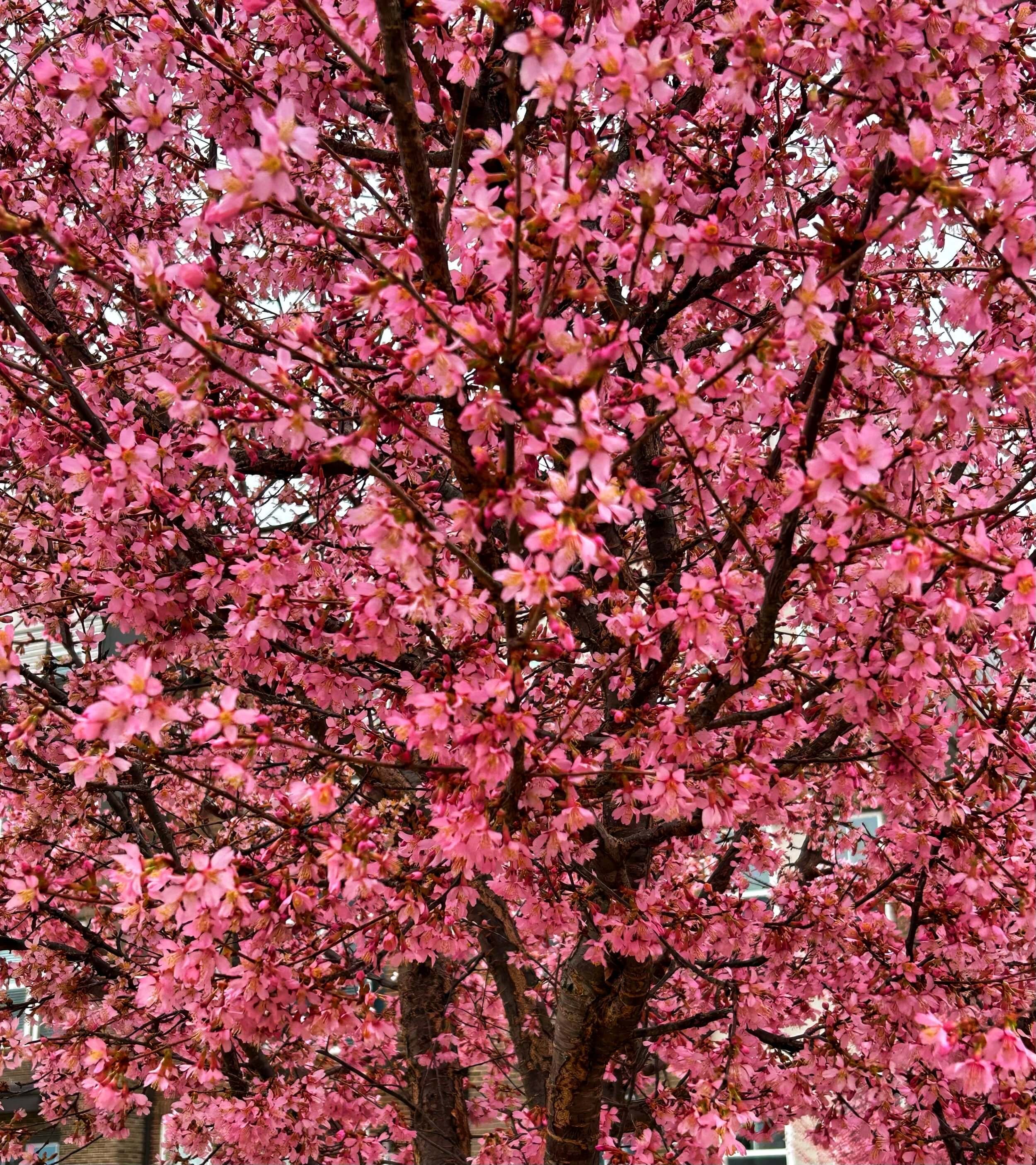









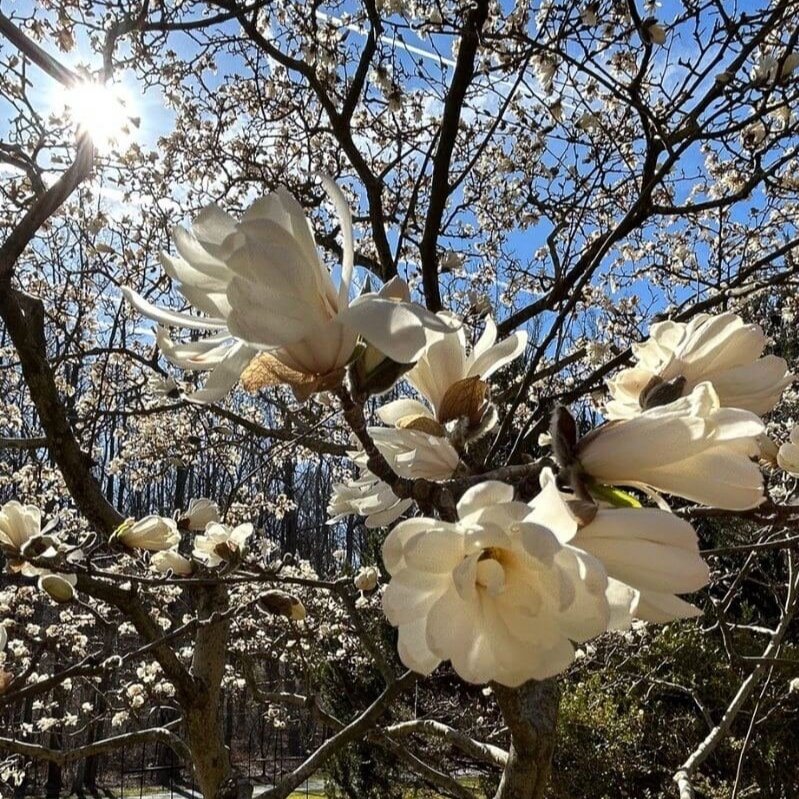

Create a Winter Wonderland with This Unique Small Tree